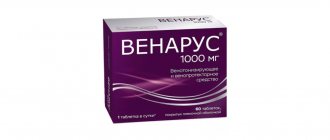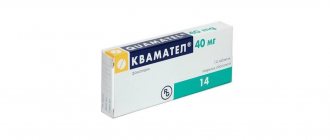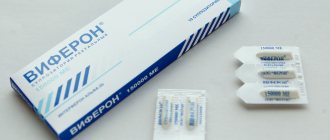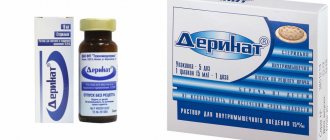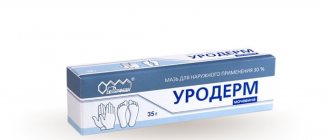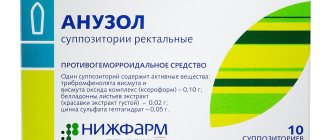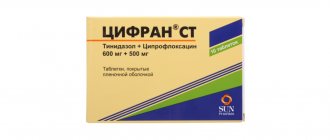For rheumatoid arthritis and other joint pathologies, non-steroidal drugs are often used. They eliminate unpleasant pain and help relieve inflammation. One of the inexpensive products is Amelotex. It is available in the form of gel, tablets and solution for intramuscular injection.
"Amelotex": description of the drug
"Amelotex" is a drug for preventing pain and inflammatory processes in joint tissues, and also as an antipyretic. Available in different forms:
- solution for intramuscular injection (in ampoules);
- pills;
- ointment (gel).
"Amelotex" is a non-steroidal anti-inflammatory drug. The active ingredient is meloxicam. It inhibits the activity of the enzyme cyclooxygenase-2, due to which inflammatory processes weaken.
The drug can be purchased at a pharmacy only with a doctor's prescription. Store it indoors at a temperature of no more than 25 degrees, in a dry and dark place. Access for children is prohibited. The general shelf life is 3 years from the date of production.
Main substance
The main active ingredient is meloxicam. It is a representative of the group of non-selective cyclooxygenase inhibitors, that is, it blocks the production of prostaglandins, the number of which increases significantly during the progression of inflammatory processes.
The solution in ampoules may have a greenish tint, although it is mostly transparent. Amelotex does not contain hormones and belongs to the group of non-steroidal (non-hormonal) anti-inflammatory drugs.
Amelotex tablets and ointment: indications and contraindications
The form of the drug, its dosage and other parameters are determined by the doctor. Reception is carried out in the presence of such diseases:
- spondylitis of ankylosing type;
- inflammation in the joints, pain syndrome;
- osteoarthritis;
- rheumatoid type arthritis.
As a rule, Amelotex is taken to relieve regularly occurring pain. In this case, treatment eliminates only the consequences of the disease, without affecting its causes.
In some cases, the use of the drug is contraindicated:
- allergic reactions;
- cerebrovascular type bleeding;
- failure of cardiac function at the stage of decompensation;
- bronchial asthma;
- ulcerative lesions of the gastrointestinal tract (in case of taking tablets);
- hypersensitivity to acetylsalicylic acid;
- recurrent polyposis;
- renal failure and other kidney pathologies;
- liver diseases;
- ulcerative colitis of nonspecific type;
- stage of recovery after coronary artery bypass surgery;
- any stage of pregnancy;
- breastfeeding period;
- children up to 14 years old inclusive.
The medicine should be taken with caution in the presence of the following pathologies:
- heart failure;
- diabetes;
- IHD;
- pathology of peripheral arteries.
Contraindications
Due to the fact that Amelotex is a non-selective COX-1 inhibitor, its use, along with symptomatic treatment, carries a number of side effects, on the basis of which contraindications are formed:
- patient age over 60 years;
- ulcerative colitis;
- active or history of gastric bleeding;
- erosion of the gastric mucosa;
- kidney failure requiring dialysis;
- gestation period;
- lactation period;
- liver diseases in the active phase;
- patient age under 15 years
- bleeding from the rectum.
Long courses of taking the drug are unacceptable. In case of prolonged inflammation or prolonged pain, it is necessary to consult a specialist to identify the cause and prescribe adequate treatment for joint diseases.
Side effects
Side effects are rare - no more than 1% of cases. The following manifestations are possible in different patients:
- nausea;
- dyspepsia;
- diarrhea;
- ulcer;
- stomatitis;
- hepatitis;
- gastritis;
- perforation;
- colitis;
- rash;
- hives;
- decrease in hemoglobin concentration;
- leukopenia;
- bronchospasms;
- headaches;
- dizziness;
- rarely - loss of orientation, confusion;
- conjunctivitis;
- increase in pressure;
- heart rhythm disturbance;
- insufficient kidney function;
- Quincke's edema and others.
Amelotex 15 mg 20 pcs. MK Sotex tablets
pharmachologic effect
Analgesic, antipyretic, anti-inflammatory.
Composition and release form Amelotex 15 mg 20 pcs. MK Sotex tablets
Tablets - 1 tablet.
- Active substance: meloxicam 7.5 mg / 15 mg;
- Excipients: lactose monohydrate; MCC; sodium citrate; povidone; crospovidone; colloidal silicon dioxide; magnesium stearate.
Tablets, 7.5 mg and 15 mg. 10 tablets each in blister packs. 1 or 2 blister packs in a cardboard pack.
Description of the dosage form
Tablets, 15 mg: round, biconvex, scored on one side, pale yellow or pale yellow with a slight greenish tint; Marbling and slight roughness are allowed.
Characteristic
NSAIDs. Belongs to the class of oxicams; enolic acid derivative.
Directions for use and doses
Inside, during meals, 1 time per day.
Rheumatoid arthritis: 15 mg/day. Depending on the therapeutic effect, the dose can be reduced to 7.5 mg/day.
Osteoarthritis: 7.5 mg/day. If ineffective, the dose can be increased to 15 mg/day.
Ankylosing spondylitis: 15 mg/day.
The maximum daily dose is 15 mg.
In patients with an increased risk of side effects, as well as in patients with severe renal failure on hemodialysis, the dose should not exceed 7.5 mg/day.
Pharmacodynamics
Meloxicam is an NSAID with analgesic, anti-inflammatory and antipyretic effects.
The anti-inflammatory effect is associated with inhibition of the enzymatic activity of COX-2, which is involved in the biosynthesis of PG in the area of inflammation. To a lesser extent, meloxicam acts on COX-1, which is involved in the synthesis of PG, which protects the gastrointestinal mucosa and takes part in the regulation of blood flow in the kidneys.
Pharmacokinetics
Well absorbed from the gastrointestinal tract, the absolute bioavailability of meloxicam is 89%. Concomitant food intake does not alter absorption. When using the drug orally in doses of 7.5 and 15 mg, its concentrations are proportional to the doses. Css are reached within 3–5 days. With long-term use of the drug (more than 1 year), concentrations are similar to those observed after the first achievement of Css. The range of differences between Cmax and basal concentrations of the drug after taking it once a day is relatively small and is 0.4–1 mcg/ml when using a dose of 7.5 mg, and 0.8–2 mcg/ml when using a dose of 15 mg. ml (the values of Cmin and Cmax are given, respectively).
Meloxicam penetrates histohematic barriers, the concentration in synovial fluid reaches 50% of the Cmax of the drug in plasma.
Almost completely metabolized in the liver with the formation of 4 pharmacologically inactive derivatives. The main metabolite, 5′-carboxymeloxicam (60% of the dose), is formed by oxidation of an intermediate metabolite, 5′-hydroxymethylmeloxicam, which is also excreted, but to a lesser extent (9% of the dose). In vitro studies have shown that the CYP2C9 isoenzyme plays an important role in this metabolic transformation; the CYP3A4 isoenzyme is of additional importance. Peroxidase is involved in the formation of 2 other metabolites (constituting 16 and 4% of the drug dose, respectively), the activity of which probably varies individually.
It is excreted equally through the intestines and kidneys, mainly in the form of metabolites. Less than 5% of the daily dose is excreted unchanged through the intestines; the drug is found unchanged in urine only in trace amounts. T1/2 of meloxicam is 15–20 hours. Plasma clearance averages 8 ml/min. In elderly people, drug clearance is reduced. Vd is low and averages 11 liters.
Hepatic or renal failure of moderate severity does not have a significant effect on the pharmacokinetics of meloxicam.
Indications for use Amelotex 15 mg 20 pcs. MK Sotex tablets
- osteoarthritis;
- rheumatoid arthritis;
- ankylosing spondylitis (ankylosing spondylitis);
- inflammatory and degenerative diseases of the joints, accompanied by pain (for a solution of intramuscular injection).
Intended for symptomatic therapy, reducing pain and inflammation at the time of use, does not affect the progression of the disease.
Contraindications
- hypersensitivity to the active substance or auxiliary components;
- period after coronary artery bypass surgery;
- decompensated heart failure;
- complete or incomplete combination of bronchial asthma, recurrent polyposis of the nose and paranasal sinuses and intolerance to acetylsalicylic acid and other NSAIDs (including a history);
- erosive and ulcerative changes in the mucous membrane of the stomach or duodenum, active gastrointestinal bleeding;
- inflammatory bowel diseases (ulcerative colitis, Crohn's disease);
- cerebrovascular bleeding or other bleeding;
- severe liver failure or active liver disease;
- severe renal failure in patients not undergoing dialysis (Cl creatinine less than 30 ml/min), progressive kidney diseases, incl. confirmed hyperkalemia;
- rare hereditary diseases such as lactose intolerance, lactase deficiency or glucose-galactose malabsorption;
- pregnancy;
- breastfeeding period;
- age up to 15 years.
With caution: coronary heart disease; cerebrovascular diseases; congestive heart failure; dyslipidemia/hyperlipidemia; diabetes; peripheral arterial disease; smoking; Creatinine Cl
Application of Amelotex 15 mg 20 pcs. MK Sotex tablets during pregnancy and breastfeeding
The drug is contraindicated during pregnancy and lactation (breastfeeding).
Suppression of prostaglandin synthesis may have undesirable effects on pregnancy and fetal development.
It is known that NSAIDs pass into breast milk, so Amelotex® is not recommended for use during breastfeeding.
The use of meloxicam, like other drugs that block prostaglandin synthesis, can affect fertility, so it is not recommended for women planning pregnancy.
special instructions
Caution should be exercised when using the drug in patients with a history of gastric and duodenal ulcers, as well as in patients on anticoagulant therapy. Such patients have an increased risk of ulcerative-erosive diseases of the gastrointestinal tract.
Caution should be exercised and monitoring of renal function indicators when using the drug in elderly patients with CHF with symptoms of circulatory failure, liver cirrhosis, and hypovolemia as a result of surgical interventions. In patients with renal failure, if creatinine Cl is more than 30 ml/min, no dosage adjustment is required.
For patients on hemodialysis, the dosage of the drug should not exceed 7.5 mg/day.
If there is a persistent and significant increase in transaminases and changes in other indicators of liver function, the drug should be discontinued and control tests performed.
Patients taking diuretics and meloxicam simultaneously should take sufficient fluids.
If allergic reactions (itching, skin rash, urticaria, photosensitivity) occur during treatment, you must stop taking the drug.
Meloxicam, like other NSAIDs, can mask the symptoms of infectious diseases.
The use of meloxicam, like other drugs that block the synthesis of PG, can affect fertility, so it is not recommended for women planning pregnancy.
Impact on the ability to drive vehicles and operate machinery. The use of the drug may cause undesirable effects such as headaches, dizziness, and drowsiness. You should refrain from driving vehicles and servicing machines and mechanisms that require concentration.
Overdose
Symptoms: impaired consciousness, nausea, vomiting, epigastric pain, gastrointestinal bleeding, acute renal failure, liver failure, respiratory arrest, asystole.
Treatment: gastric lavage should be performed, activated carbon should be prescribed (within the next hour), symptomatic therapy. Cholestyramine accelerates the elimination of the drug from the body. Forced diuresis and hemodialysis are ineffective (due to the high binding of the drug to blood proteins). There is no specific antidote to the drug.
Side effects Amelotex 15 mg 20 pcs. MK Sotex tablets
From the gastrointestinal tract: more than 1% - dyspepsia, incl. nausea, vomiting, abdominal pain, constipation, flatulence, diarrhea; 0.1–1% - transient increase in the activity of liver transaminases, hyperbilirubinemia, belching, esophagitis, gastroduodenal ulcer, bleeding from the gastrointestinal tract (including hidden), stomatitis; less than 0.1% - gastrointestinal perforation, colitis, hepatitis, gastritis.
From the hematopoietic organs: more than 1% - anemia; 0.1–1% change in blood formula, incl. leukopenia, thrombocytopenia.
From the skin: more than 1% - itching, skin rash; 0.1–1% - urticaria; less than 0.1% - photosensitivity, bullous rashes, erythema multiforme, incl. Stevens-Johnson syndrome, toxic epidermal necrolysis.
From the respiratory system: less than 0.1% - bronchospasm.
From the nervous system: more than 1% - dizziness, headache; 0.1–1% - vertigo, tinnitus, drowsiness; less than 0.1% - confusion, disorientation, emotional lability.
From the cardiovascular system: more than 1% - peripheral edema; 0.1–1% - increased blood pressure, palpitations, flushes of blood to the skin of the face.
From the urinary system: 0.1–1% - hypercreatininemia and/or increased urea in the blood serum; less than 0.1% - acute renal failure; The connection with taking meloxicam has not been established - interstitial nephritis, albuminuria, hematuria.
From the senses: less than 0.1% - conjunctivitis, blurred vision (including blurred vision).
Allergic reactions: less than 0.1% - angioedema, anaphylactoid/anaphylactic reactions.
Drug interactions
When used simultaneously with other NSAIDs (including acetylsalicylic acid), the risk of erosive and ulcerative lesions and bleeding from the gastrointestinal tract increases.
When used simultaneously with antihypertensive drugs, the effectiveness of the latter may be reduced.
When used simultaneously with lithium preparations, the development of accumulation of lithium and an increase in its toxic effect are possible (monitoring the concentration of lithium in the blood is recommended).
When used simultaneously with methotrexate, the latter's side effect on the hematopoietic system increases (the risk of anemia and leukopenia; periodic monitoring of a general blood test is indicated).
When used simultaneously with diuretics and cyclosporine, the risk of developing renal failure increases.
When used simultaneously with intrauterine contraceptives, the effectiveness of the latter may decrease.
When used simultaneously with anticoagulants (heparin, ticlopidine, warfarin), as well as thrombolytic drugs (streptokinase, fibrinolysin), the risk of bleeding increases (periodic monitoring of blood clotting parameters is required).
When used simultaneously with cholestyramine, the binding of meloxicam increases its excretion through the gastrointestinal tract.
When used simultaneously with SSRIs, the risk of developing gastrointestinal bleeding increases.
"Amelotex": instructions for use of tablets
The tablets should be taken 2 times a day with meals. The maximum daily amount for an adult is 15 mg (in terms of the active substance). The regimen depends on the disease:
- Rheumatoid arthritis - 15 mg per day, then no more than 7.5 mg.
- Osteoarthritis – 7.5 mg per day with a possible increase to 15 mg.
- Spondylitis of ankylosing type - maximum dose 15 mg per day.
If severe renal failure is diagnosed and the patient is undergoing hemodialysis, the maximum daily dosage is 7.5 mg.
Special conditions of admission
If symptomatic treatment cannot be carried out without the participation of non-steroidal anti-inflammatory drugs of the first group, it is necessary to assess the risks of side effects, especially in patients over 65 years of age. Patients with a high risk of adverse reactions from the gastrointestinal tract and older patients should be prescribed a drug that protects the mucous membranes of the gastrointestinal tract from damage as a complex therapy. For example, Nolpaza.
If a patient, while taking Amelotex, notices changes in the skin in the form of irritation, redness, itching or rash, it is necessary to consider options for replacing symptomatic therapy.
Cases of overdose
It is important to understand that in case of overdose, quite serious consequences are possible:
- liver failure;
- kidney failure;
- bleeding in the gastrointestinal tract;
- asystole and others.
Therefore, the dosage regimen and frequency of administration prescribed by the doctor should be followed very carefully. In case of overdose, you need to take several tablets of activated carbon and do a gastric lavage. Further treatment depends on the symptoms. Hemodialysis in these cases is not particularly effective. If necessary, consult a doctor.
Indications for use
Amelotex tablets, the instructions for use indicate this, are used for symptomatic therapy. They can reduce the intensity of pain in various inflammatory and degenerative joint diseases. The medicine has no effect on the progression of the disease.
In particular, the drug is prescribed for:
- Osteoarthritis, which is characterized by the destruction of articular cartilage.
- Rheumatoid arthritis, which is a chronic disease affecting the joints.
- Ankylosing spondylitis, which is manifested by inflammation of the intervertebral joints, which leads to immobility.
